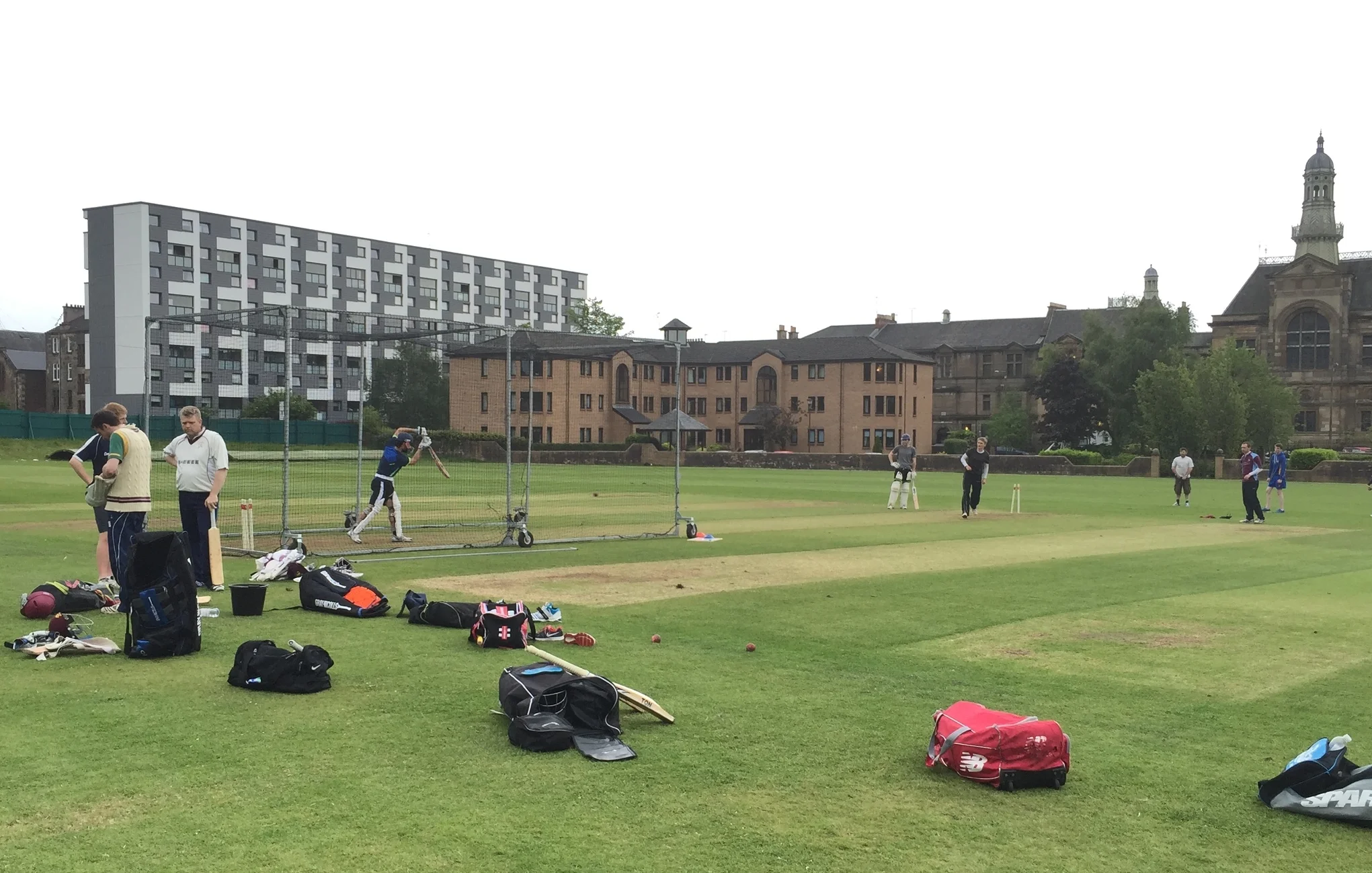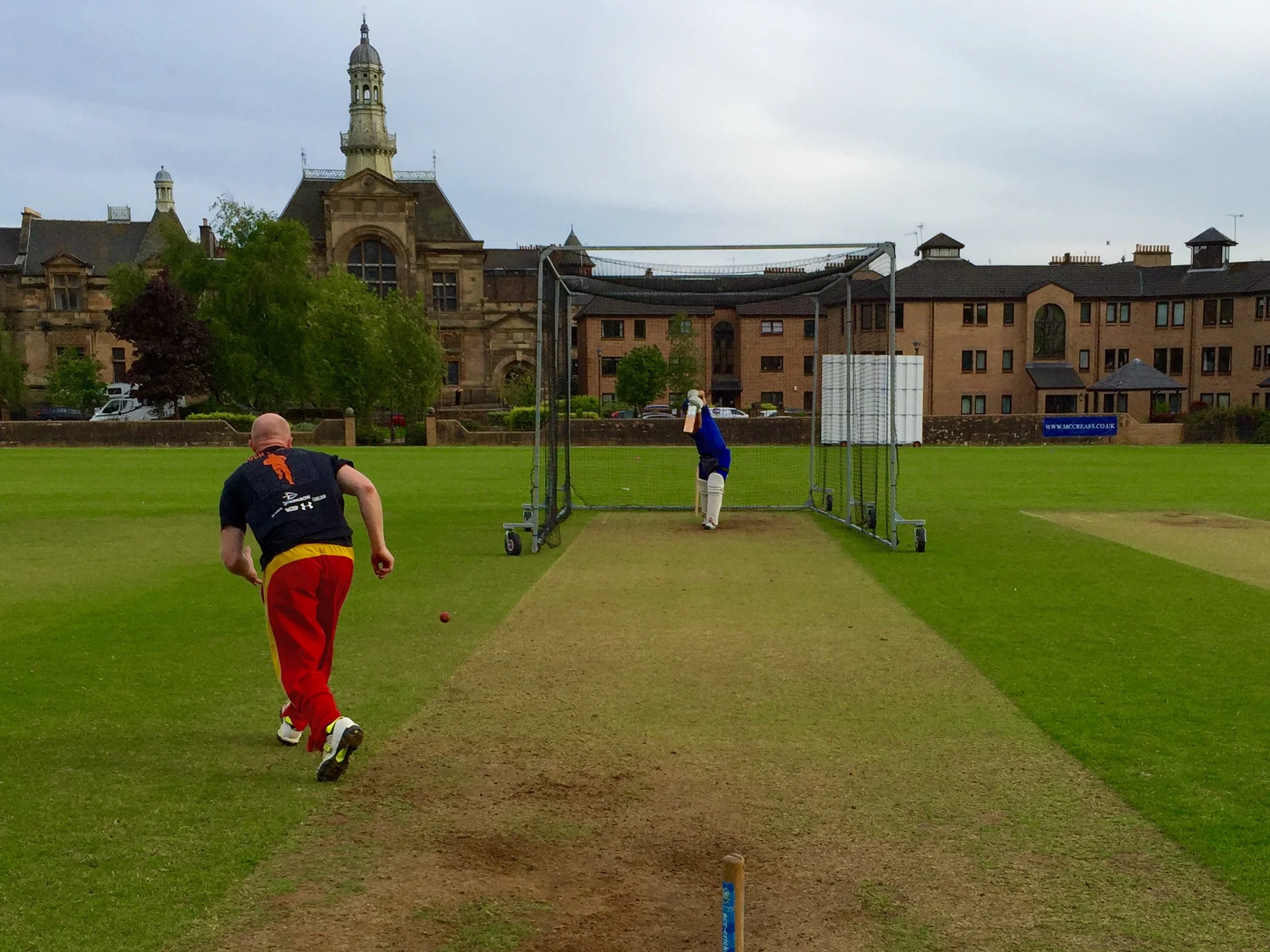At this point in the season, I have seen the culture at the club alongside the strengths and the limitations of players. It's not been totally as I expected, and there have been some important lessons.
Batting
The biggest issue is still first team batting. My challenge has been to try and bring players up to scratch. I identified three batsmen who could do the job with help from me, but none have done well, and one has done awfully.
Supporting batsmen have also not found ways to improve. I think we have seven other potential top six batters in the club, plus eight who could contribute. All of the former have played without making an impact and most of the latter are the same.
We have tried throw downs, bowling machine, bowling in nets and middle practice. We have added pressure and context and even - despite my protests - had a hit. Nothing has clicked into place for anyone batting in the top eight. No fifties, no one with over 150 runs in total for the year, and no one with a Sb% over 29%.
Some of this is down to training volume: No one can train every week through various other commitments but some don't train at all. We have a generally good attitude to training at the club and those who don't train understand it hurts their chances of playing. On top of this, we get a lot of guys at training who don't want to bat in the top six of the first team but they do want a go in nets. That reduces time available to to the better guys, so volume is lower again.
It's fortunate we have the indoor school as this allows us to get something done.
The other challenge is getting the right bowling to the right batting. We often have six to 10 first team batsmen to practice against three or four first team bowlers. At 15 minutes each, eight batsmen take two hours and there is no way our opening bowler is doing that much work. I wouldn't let him even if he wanted it!
The final element is training quality. When we are focused and mindful we improve, yet we still don't have that culture at the club. Very little deliberate practice occurs and we are patchy in the way we review things. I'm huge on the process of practice-review-improve and that has not settled in, as reflected by the lack of progress.
Instead we simply talk about volume to much.
We say things like "I need to feel bat on ball to get my timing". There is an assumption that hitting more balls is all you need. Yet, I strongly believe hitting more balls is a way of preventing further decline rather than getting better. To get better you need to work on something specific, measure if it's working then review and adjust at suitable intervals.
In hindsight, this is a big change that won't happen in one season or with everyone. Instead, it's a matter of identifying core players who can buy into the idea. We have a enough passionate, committed players to make this work in the long run.
Outside of training, there are lots of opportunities for top order batsmen to get "time in the middle". We play a huge number of games (this week gone saw six adult fixtures and anyone wanting a bat could have played four times). The top order generally don't play much outside of their one first team game a week. Personally, I think that is fine for experienced guys. Match experience gives you game sense more than anything else. That said, I would rather see someone play than come to training to hit balls mindlessly. At least in a game you could learn something about pressure and shot selection.
On the other hand, there has been plenty of run scoring in the other teams. In fact, several failed first team players have bashed big scores in the seconds and thirds.
My theory here is that there is a much larger gap in standards between the firsts and other other sides. If you can bat a bit, you can plunder plenty of runs against weak attacks in lower teams. However, in the firsts you get at least 30 high class overs. A pro can bowl 15 overs, so you only need one other very good bowler and you are 60% covered. Many sides have three or four classy guys so there is little respite. If you can bat a bit you won't ever get a fifty in the firsts where you might have easily got one in the seconds. You need to be bang on your game.
Of course, all that means training is crucial for those dozen run makers who could make up the top seven. That's without even considering eight, nine, 10, jack who also need to improve their batting skills.
I would say only three guys are training right for their needs. Two are close to being in decent form. The rest fall into the "don't train or train and hit balls" camp. Only one guy is an automatic pick for the first team because he is a "natural" (although he has also not performed this season). The others have shown very little improvement despite mostly training hard. This is where the problem lies, as they don't have the skill to overcome good quality bowling and are not getting better because they lack focused training.
And really, it's that lack of progress that is hurting us most, and is my biggest failure as coach this year.
Bowling
As we don't have an overseas bowler, we rely heavily on our local talent. This area is a lot better in the firsts and is also looking good for the future.
We have three very good seamers: Two line and length guys who can bowl good pace and one out and out pace bowler. The latter has found a much better length as they year has gone on and has taken 20 wickets in nine digs. He plays a lot of cricket and knows how to manage his workload.
The other seamers are experienced bowlers and don't need a lot of input from me. Both will bowl on the spot all day and get it nibbling about on a good day. We could do with some more variation to complete the seam picture but it's still at least 35 good overs from those three.
The backup seamers - barring one guy - have less pace and train less often as a general rule. That said, they still manage to be one of the best second XI seam attacks in the league. We have five guys in that category.
Training for all these seamers is not tough. They are happy to bowl as much as they need to bowl and most prefer to bowl at a batsman. I have brought in a lot more target bowling this year without a batter and have used middle practice. It's a lot easier to do mindful practice as a bowler because you are controlling what happens, so for me it's a matter of managing workload and making sure bowlers feel more than just a human bowling machine.
I have tried to introduce a few technical things here and there to mixed success. One guy was dead against anything technical so I left him to it, while another came to me with a run up issue that we have tried to iron out. I'd like to do more technical work with the bowlers but have left them mostly to drive it and not had a lot of requests. Performances have been reasonable all season.
The spinners are a different story. We have a lot of talent bubbling under (three youth leggies have broken through into adult cricket this year) but the senior spinners have not bowled well this year. We have used two in the firsts, but neither have bowled well and have had few overs. Even the seconds have not seen many wickets come from spin.
The senior spinners practice hard, with one working on some technical stuff with me, but have not seen any huge signs of improvement over the year. I feel the answer is to drill down hard on some ball tracking, especially as the wickets get better for spinners in August. If we track performance across sessions as well as from ball to ball, we can see improvements much more easily.
I'm also considering a "spin hothouse" idea, where the spinners get together for a few specific sessions possibly under the eye of an experienced spin coach. We have seven proper spinners playing senior cricket so I am sure we can get some great cross-pollination going in this art.
Fielding
When I started I wanted fielding at the centre of our performances. I wanted us to have the highest standards for throwing, cartching and stopping in the league. I think we have those standards but there is a long way to go.
Everyone who trains does a lot of fielding. We have done technical work on throwing and volume work on everything. I love hitting balls and will make sure we get something in every session and before each game. We use several Skyers, various stump targets for throwing and two Katchet ramps. Players do a variety of drills and are good at making up their own. It's our best area at all levels.
Our catching is generally good, but we have also dropped a lot as a club this year. Groundwork and throwing has been impressive. We can do more: We can hit the stumps more often, pick up more cleanly in the infield and take more flat catches. These are all advanced skills and I'm pleased we are looking at them as realistic aims.
One of my goals is to track all fielding stats better so we can see improvement, rather than assume we are bad because we made mistakes. Every team makes mistakes, it's how many over time that matters most. The challenge is to get all the drops, runs saved, stumps hit and missed, and misfields recorded every game. Our scorer has plenty to do, and I have not settled in to coach every game as yet, but I plan to record things for the last games this year to have a benchmark for next year.
Nevertheless, I see fielding as my biggest success as well as the area for easy growth this season and next.






